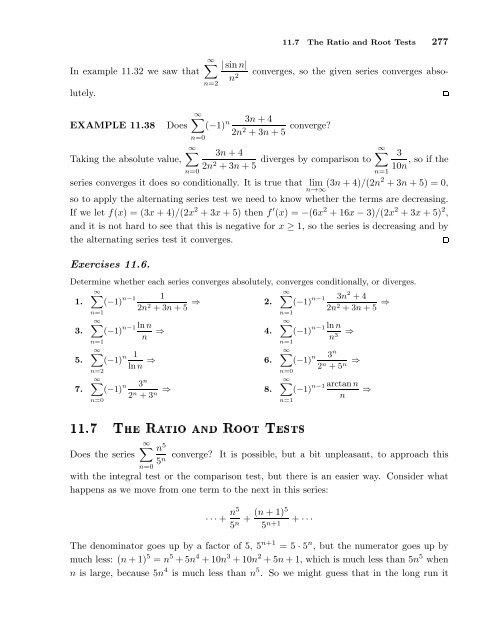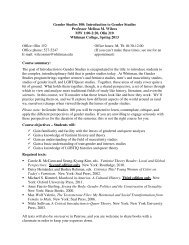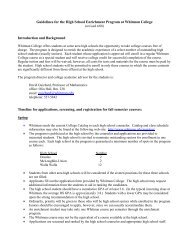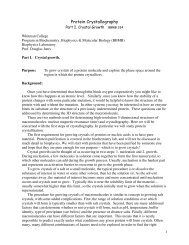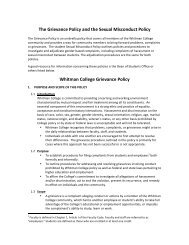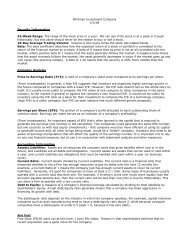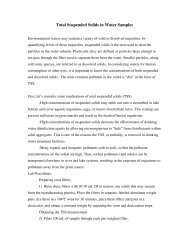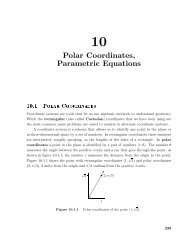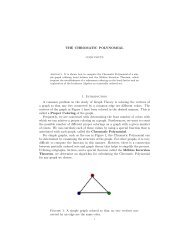Sequences and Series
Sequences and Series
Sequences and Series
You also want an ePaper? Increase the reach of your titles
YUMPU automatically turns print PDFs into web optimized ePapers that Google loves.
In example 11.32 we saw thatconverges, so the given series converges absolutely.∞∑n=2|sinn|n 211.7 The Ratio <strong>and</strong> Root Tests 277EXAMPLE 11.38 DoesTaking the absolute value,∞∑(−1) n 3n+42n 2 +3n+5 converge?n=0∞∑n=03n+4∞2n 2 +3n+5 diverges by comparison to ∑ 3, so if the10nseries converges it does so conditionally. It is true that limn→∞ (3n+4)/(2n2 +3n+5) = 0,so to apply the alternating series test we need to know whether the terms are decreasing.If we let f(x) = (3x+4)/(2x 2 +3x+5) then f ′ (x) = −(6x 2 +16x−3)/(2x 2 +3x+5) 2 ,<strong>and</strong> it is not hard to see that this is negative for x ≥ 1, so the series is decreasing <strong>and</strong> bythe alternating series test it converges.Exercises 11.6.Determine whether each series converges absolutely, converges conditionally, or diverges.∞∑1. (−1) n−1 12n 2 +3n+5 ⇒ 2. ∑ ∞(−1) n−1 3n 2 +42n 2 +3n+5 ⇒n=1n=1∞∑3. (−1) n−1 lnnn ⇒4. ∑ ∞(−1) n−1 lnnn ⇒ 3 n=1n=1∞∑5. (−1) n 1lnn ⇒6. ∑ ∞(−1) n 3 n½½º ÌÊØÓÒÊÓÓØÌ×Ø×2 n +5 ⇒ n n=2n=0∞∑7. (−1) n 3 n∞2 n +3 ⇒ 8. ∑(−1) n−1 arctann⇒n nn=0n=1∞∑ n 5Does the series converge? It is possible, but a bit unpleasant, to approach this5n n=0with the integral test or the comparison test, but there is an easier way. Consider whathappens as we move from one term to the next in this series:···+ n55 n + (n+1)55 n+1 +···The denominator goes up by a factor of 5, 5 n+1 = 5 ·5 n , but the numerator goes up bymuch less: (n+1) 5 = n 5 +5n 4 +10n 3 +10n 2 +5n+1, which is much less than 5n 5 whenn is large, because 5n 4 is much less than n 5 . So we might guess that in the long run itn=1


